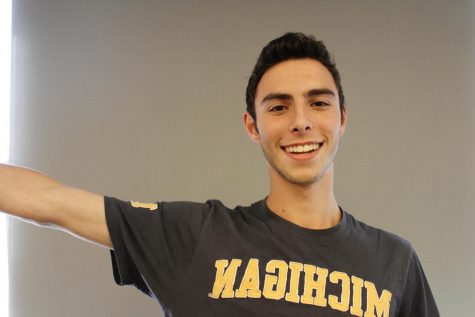Civil in the South
Cookies Trip Reflects on Current Political Affairs
While some students perform musical theater excerpts, watch “The Simpsons,” or paint with Bob Ross, junior Wilson Cedillo stands in front of an Ernest Withers Civil Rights Era photograph, reflecting on the legacy of Reconstruction. Cedillo is traveling in a group of 22 juniors and seniors and accompanied by Upper School history teacher Andrew Bigelow and Upper School English teacher Theresa Collins on the annual Civil Rights Trip.
From Wednesday, May 1 to Saturday, May 4, the group visited historical sites in Jackson, Memphis, and the Mississippi Delta, all of which led them to connect the struggles of the past with those of the present-day.
Bigelow, who covers the Civil Rights Movement in the curricula of his Upper School History course and the Civil Rights Movement elective, has taken nine different groups of students on the Civil Rights Trip since 2009. “One of my student’s parents was born and raised in Memphis,” Bigelow said, “and she’s the one who contacted me soon after I came to Parker in 2009 and said she would help me sponsor a trip to bring kids to Memphis to go to the new Civil Rights Movement and to study Memphis—the music, the culture, the history.”
During his second journey below the Mason-Dixon Line, and every year since, Bigelow went with Collins, who teaches a senior elective called, “Issues of Race, Class, Gender, and Sexual Orientation.” “We did it for a couple more years, focusing primarily on Memphis,” Bigelow said. “We realized that we really wanted to zone in on the whole civil rights history, and we wanted to go beyond Memphis. Ms. Collins and I got an enrichment grant to go to Alabama to travel all over Alabama, to go to all of the historical sites—the Edmund Pettis Bridge, the Selma marches, the Children’s Crusade, 16th Street Baptist Church—and then we ran into Mia Henry.”
Mia Henry, who serves as a guide, facilitator and founded the Kalamazoo, Michigan-based Freedom Lifted tour agency, has been helping Bigelow and Collins plan Civil Rights trips, which have been different every year. “We alternate every year between Alabama and Memphis and Mississippi,” Bigelow said. “Every year, we tweak it, redo it, and every year, more memorials open up, more and more historical sites open up.”
This year, Bigelow and Collins took the students to the following Memphis landmarks: Stax Museum of American Soul Music, one of the few soul music museums in the world; the Ernest Withers Gallery, a museum filled with photographs celebrating black history and, more specifically, African-Americans’ pursuit of civil rights; and Beale Street, a street with countless blues clubs and museums.
On day two, the students traveled further south to the Mississippi Delta, where they visited the house of civil rights leader Amzie Moore.
After the Charlottesville rally and the reemergence of white nationalism in the United States, Bigelow views the annual trip differently. “It makes me want to go even more,” Bigelow said about Charlottesville.







